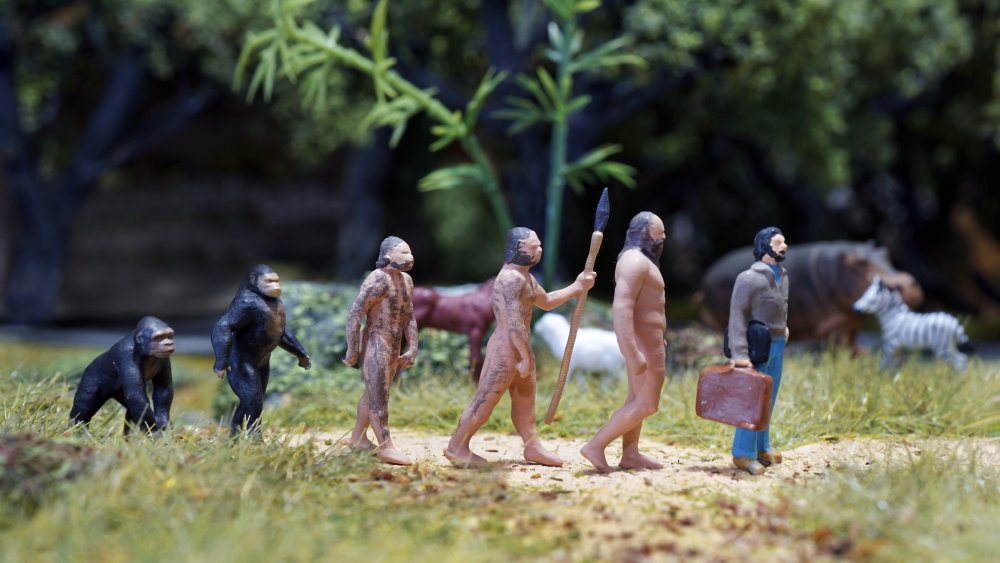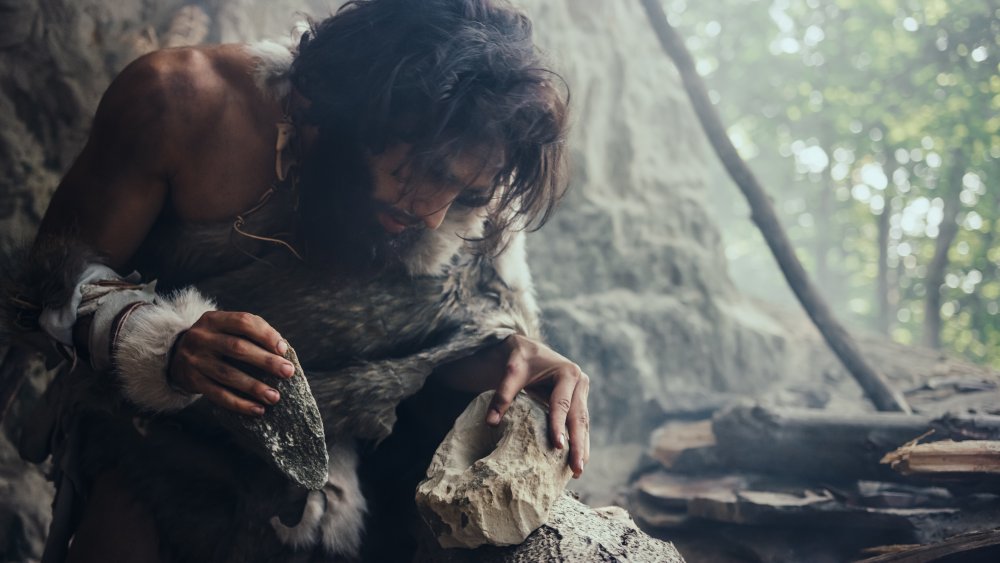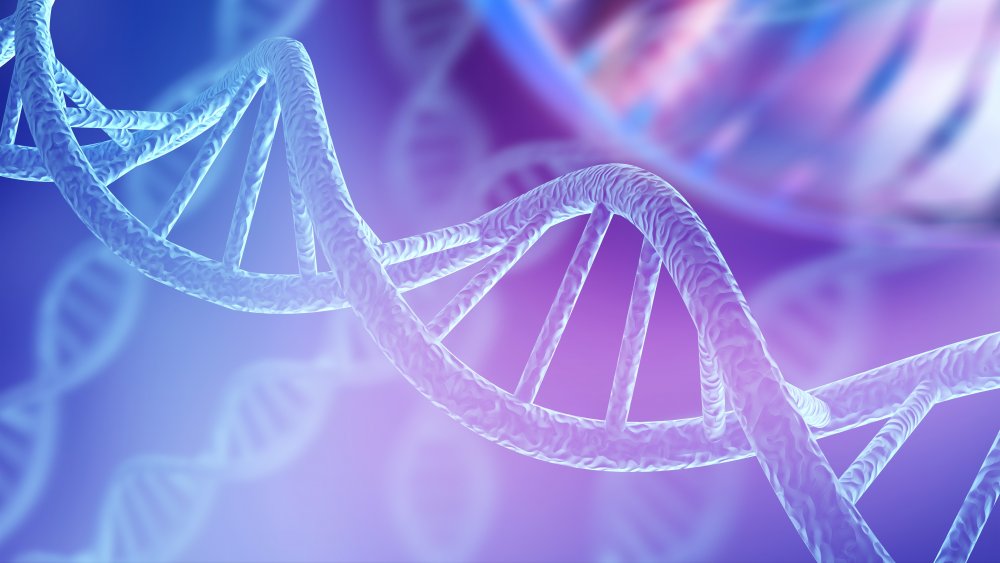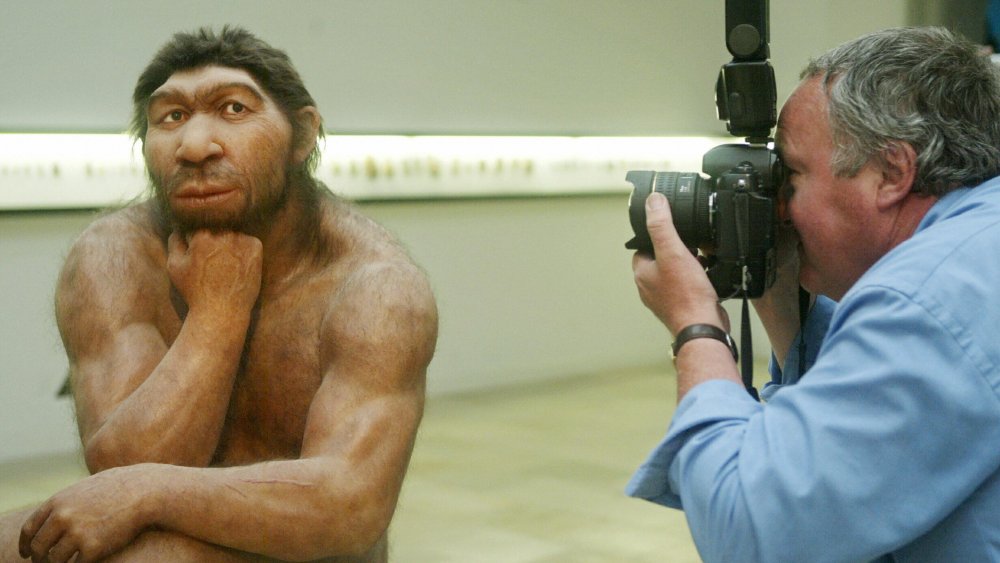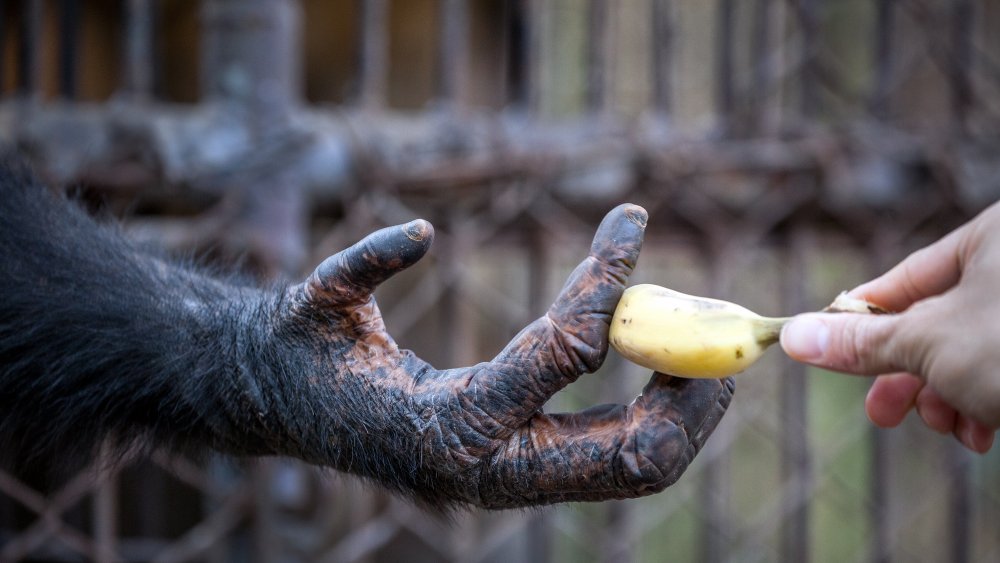What We Know About The 'Ghost Population' Of Missing Humans
You probably remember those "Evolution of Man" diagrams from high school biology. You know, those vague timelines that show tiny ape-like creatures with curved spines gradually progressing to stand upright until they reach the last tool-wielding link in the chain: anatomically modern humans. Aside from cryptic murmurings about some near-mythological missing link, the evolution of man from primitive Australopithecines to more modern hominids like Homo habilis and Homo erectus seemed pretty straightforward.
Not so, say modern researchers. The scientific reality of our journey to sapience is unsurprisingly far more complicated than our 11th grade textbooks would have us believe. Contemporary evolutionary biologists encourage us to think of human evolution as more of a branching tree than a straight progression. Modern genetic analysis techniques have allowed researchers to dive deep into the human genome to unlock the history of our prehistoric evolution, and what they've found is a bit ... convoluted.
That path from Australopithecus africanus to Homo sapiens sapiens is complicated, rife with wrong turns, outrageous genetic tangents and evolutionary dead ends. The more we uncover about our DNA, the more we have to adjust the story of our evolution to match the facts. Scientists now believe that ancient hominids were — ahem — indiscriminate lovers. Genetic artifacts from the free loving Stone Age suggest that our ancestors all took it where they could get it — and that meant sometimes straying outside the tribe.
DNA found in West Africans suggests a missing link
Homo habilis got down with its contemporary, Homo erectus, as well as other cousins roaming the savannah around the same time. Even Homo sapiens — yes, us — enjoyed trawling for a little strange in the Neanderthal camps. It's all there in our chromosomes, like some genetic romance novel.
As you may have noticed, anatomically modern humans are the only surviving species of the genus Homo populating the planet today, but the hominid dating pool wasn't always so homogenous. Our direct genetic line diverged from our closest living relatives – bonobos and chimpanzees, if you were wondering — somewhere between 4 million and 7 million years ago. During most of that intervening time, multiple species of hominids roamed the planet simultaneously. These species were so closely related that they were capable of mating to produce fertile young. And boy did they get after it.
Scientists know that these disparate populations copulated, because some of their genes survive today in the deep recesses of our genome. Biologists can usually peg these genetic interlopers to known species of hominid, but they've been stumped by one such recently discovered pocket of genetic code found in the DNA of modern West Africans. These bits of DNA appear to derive from some significant "ghost population" of undiscovered hominids populating the area around 500,000 years ago.
Ghost hominids contributed as much as 19% of genes to modern genome
According to researchers Arun Durvasula and Sriram Sankararaman, these findings are far from definitive, but according to best estimates these missing ancestors split off from a Neanderthal precursor species between 360,000 and 1 million years ago. A population of approximately 20,000 of these ghost hominids likely interbred with ancestors of modern West Africans at some point in the last 124,000 years. So, genetically speaking, this so-far-undiscovered relative split off from modern humans even earlier than the Neanderthals.
Sankararaman said, "They seem to have made a pretty substantial impact on the genomes of the present day individuals we studied. They account for 2% to 19% of their genetic ancestry." Where were you on that one, 23 and Me?
While 19% may seem like quite a bit of genetic material, evolutionary biologists are still unsure what — if any — impact these kinds of contributions have on modern humans. One UCLA researcher explained that, "while several studies have revealed contributions from deep lineages to the ancestry of present-day Africans, the nature of these contributions remains poorly understood." So we see the genes right there in our modern genome, we're just not sure what they exactly do.
In the latest study, researchers compared 405 individual genomes from West African participants. They cross-referenced their results with other known hominids, like Neanderthals, to determine whether or not their data suggested a new, undiscovered genetic contributor.
Not the only ghosts haunting the human genome
Some experts say this result isn't unexpected. Professor Joel D. Irish of Liverpool John Moores University told CNN that there were likely many different human populations interbreeding during this epoch, each with distinguishable bits of genetic code. "I think at one time, there'd have been all sorts of populations, with genetics different enough to look a bit different," he explained. "Everybody tends to mate with everybody. I think we're going to find more and more of these 'ghost' populations coming up."
The evidence certainly suggests he may be right. West Africans aren't the only modern humans that show contributions from other species of hominid. Western European samples show significant percentages of Neanderthal DNA, and indigenous Australians have contributions from their local ancestors, the Denisovans.
Like a chimp
Now, this doesn't mean you should go running to your closest zoo with a dozen roses and a bushel of bananas. Bonobos and chimpanzees are too distantly related to modern humans to productively mate, so opportunities for this kind of hybridization no longer abound. The reason we humans cleared the field of all our closest relatives? Our advanced brains and capacity for language probably helped us out-compete all the other hominids occupying the same ecological niche. In evolution as in war, to the victor go the spoils: in this case, the entire planet Earth. So pour one out for our extinct cousins. May their contributions live on in our DNA.
